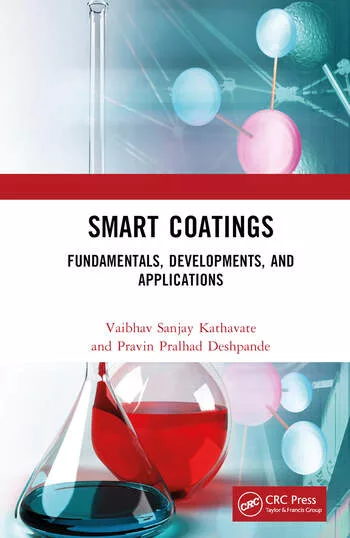Distributor Perspectives
Distributors play an important role in the coatings industry, providing the latest products, global reach and logistical expertise. PCI recently interviewed several leading distributors to learn more about the value that distributors bring, as well as some of the challenges they face. Participants in the interview included Christopher Ernst, Sr. Director Coatings, Adhesives, Sealants, Elastomers, and Lubricants, at Univar; Daniel T. Canavan III, Vice President, D.B. Becker, a Maroon Group LLC Company; and Barry Fisher, President of Van Horn, Metz & Co., Inc.
PCI: What are the major drivers and trends affecting distributors today?
Canavan: As the market continues to rationalize via mergers, acquisitions and joint ventures, value and performance become more critical for distribution across all marketplaces. Differentiation and performance, both for our principals and customers, drive long-term success. Distributors are offering more than logistics. We work with our principals and customers on problem solving, technical formulation, regulation assistance, supply chain sourcing and more.
Ernst: Drivers and trends continually evolve within distribution. The primary drivers include market consolidation for customers and suppliers, regulatory changes, and overall global demand. Effectively managing the complexity of the business as the market changes is critical to delivering value to our customers and suppliers, which ultimately determines our success.
Fisher: A major trend is supplier and customer consolidation and de-consolidation (spin offs such as Chemours). Distributors are also consolidating as the “baby boomer” generation of owners exits the industry.
PCI: What value do distributors bring to both suppliers and manufacturers?
Canavan: The value of distributors has, and will, continue to grow as rationalization in the marketplace continues. This would be both on the part of our chemical manufacturers and customers. Focus today has become much more on product performance, product differentiation, production efficiency and governmental regulation to name a few. It is our belief that the chemical distribution marketplace will bridge the gap with customers to make certain supply chain, logistics, local technical support and personal service are not lost.
Ernst: Distributors bring value to customers by focusing on helping them drive product development excellence, understand market trends and new technologies, and to create overall supply chain plans to manage their total cost of ownership.
Generally, a supplier presents a solution solely from their perspective and seeks to solve it with their chemistry. We often suggest multiple chemistries and formulation options to solve formulation problems, helping our customers select the optimal solution.
We also distill market information from across our broad network to deliver insight into market trends that helps our customers shape their strategies.
And we provide broad reach and product access to customers so they can achieve optimized supply chain to balance supply needs, secure supply and manage costs. We are then able to deliver value above and beyond distribution by simplifying their sourcing process and outsourcing key services like inventory management, and blending and accessing a bundle of products.
Fisher: Distributors maintain the flow of goods efficiently to customers (large, medium and small). We have the ability to listen to customers, interpret their needs and communicate the information back to suppliers. We serve the less than truckload (LTL) as well as truckload (T/L) markets efficiently through our domestic sources and through our strong relationship with Asian supply partners, consolidating supply and information to customers.
PCI: What are some of the challenges that chemical distributors face, and how have you overcome these challenges?
Canavan: There are a number of challenges we face day to day. These days the most prominent are governmental regulations. The most recent, GHS and TSCA reform, play a very big role in our marketplace. Our customers rely on us to assist them in keeping up to date on the most recent trends. Associations like the National Association of Chemical Distributors (NACD) connect their members with the pressing legislative and regulatory issues affecting the chemical distribution industry, including environment, health, safety, security and transportation issues on a national, international and state level. The NACD, comprising over 85% of the chemical distribution capacity, allows us to come together as one to leverage our joint concerns and issues.
Ernst: Chemical distributors face many challenges in servicing customers, including truck availability and delivery issues, changing regulations, and supply security and inventory. Univar has addressed these challenges in multiple ways. There has been a severe shortage of trucks and drivers, which has created delivery issues across the United States. To improve service levels, we have focused on utilizing our own fleet of trucks to deliver product to our customers to eliminate the variability in shipments and ensure our customers have the product when they need it. We find this approach not only has improved our service delivery, but it also differentiates our logistical approach and allows us to manage the servicing of our customers through increased efficiency of time and resources.
Fisher: Challenges include changing sources from NAFTA – European supply to Asian sources. Our company has established a well-vetted network of Asian suppliers to help our customers. For customers, we quickly respond to changes in regulations via our trade association, NACD, and the knowledge of our sales team.
PCI: Has industry consolidation on both the manufacturer and supplier side affected the viability of distribution companies?
Canavan: Great question. There is a unique dynamic within our landscape due to chemical manufacturing companies acquiring other manufacturers and their customers, as well as distributor rationalization via acquisition. These dynamics indeed present a challenge to the regional and local distribution markets, creating a need to elevate their service, resources and abilities to work with the global chemical community. With our recent acquisition by the Maroon Group we now have the ability to develop and utilize our combined resources and business channels not available to many smaller distribution entities. We do believe that this consolidation has, and will, continue to enhance the distribution marketplace. As rationalization continues there is no question that chemical distribution will be immediately affected with improved serviceability and regulatory compliance as there are fewer customers and principals.
Ernst: Industry consolidation continues to occur for both suppliers and manufacturers across multiple industries, including coatings. This creates change in the market; yet, we believe it creates opportunity, as we bring stability, market insight, and access to suppliers and manufacturers through the strength of our network and overall infrastructure. As consolidation occurs, we are able to help existing customers optimize their portfolios and manage total cost of ownership. Our scale and full offering also make us attractive to producers and customers seeking to simplify their supply chain. Additionally, we are able to help new manufacturers drive innovation, creating new opportunities for our customers, ourselves and our suppliers.
Fisher: Industry consolidation on the part of manufacturers makes our presence critical to customers as suppliers change. Customers depend on us for new technologies and product sourcing to respond to their changing requirements.
Looking for a reprint of this article?
From high-res PDFs to custom plaques, order your copy today!







